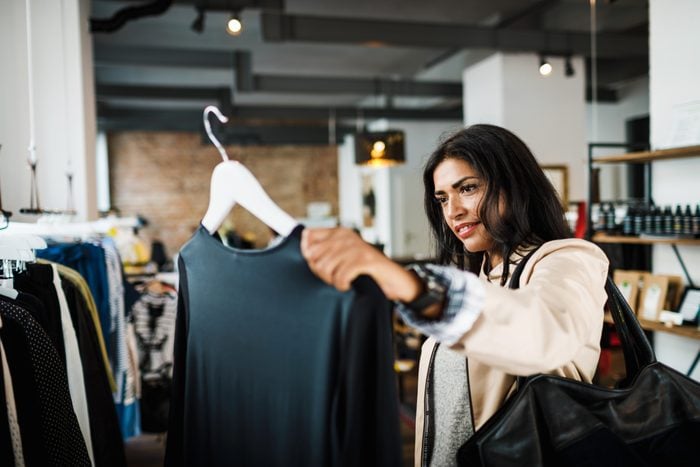
Don’t be that shopper
Retail workers deal with a lot on a daily basis, from flat-out rude customers to ones who are more subtly annoying. If you don’t think you could be grouped into either category, think again. There are plenty of etiquette rules you might be accidentally ignoring. Some of these are habits most people dislike, while some are specific habits retail workers dislike—and there’s a good chance you’re making at least one of them every time you step into a store.
“People sometimes can forget their manners when shopping. While it may be their shopping time, it’s actually our working time,” Scott Eldridge, a former gift-shop employee, tells Reader’s Digest. “Some things make our jobs harder, but some things can come off really rude.”
Most retail workers won’t tell you the things that annoy them when you’re in their stores, but we will! Avoiding the following etiquette mistakes will ensure that everyone has a better shopping experience.
Get Reader’s Digest’s Read Up newsletter for more etiquette tips, humor, cleaning, travel, tech and fun facts all week long.

Talking on your cellphone
Most of us do this all the time. After all, you might as well do a little multitasking while you shop, and everyone talks and texts constantly. And hey, what are cellphones for? While that may be true, most retail employees don’t want to listen to your conversation. Remember: They’re at work. When you’re talking loudly on the phone, it can be distracting and annoying to both employees and other shoppers.
“It can feel like the shopper thinks they’re living in a vacuum,” Michael Heflich, a former Pep Boys employee, tells Reader’s Digest. “If a cashier took personals call at work, customers would probably think that’s rude. Well, it’s not that different on the other side of things for us.” This is a rude habit restaurant staffers wish you would stop too.
What to do instead: “If you must take a call while shopping, please step outside,” says Andy LaPointe, owner of two retail stores in Michigan. “Or find a corner of the store to speak and keep your volume low.” And ideally, keep your call brief.

Drinking from a water bottle, despite a “No food or drink” sign
A “No food or drink” sign situated in the doorway of a store has to be the most overlooked sign there is. And if your beverage of choice is water, you might be thinking: But it’s just water! It’s not like you’re walking into a boutique with a Subway sandwich in your hand—you’re just staying hydrated. Sorry, but that water bottle isn’t welcome.
Spills happen, and a variety of things can go wrong when they do. For starters, water can stain delicate fabrics like silk and suede. And if you spill that water on the floor, someone can slip, get hurt and even potentially sue the store. At the very least, an employee will have to clean it up, pronto. “Stores have rules for a reason,” says Mac Steer, owner and director of Simify, which sells prepaid SIM cards for travel. “They’re there to help keep everyone safe and happy as they shop. When you see a sign that says, ‘No food or drink,’ it means no food or drink of any kind!”
What to do instead: Keep all beverages and snacks in your car or your bag. No exceptions, even for kids. (Especially for kids!) If you missed the sign, not a big deal—just put away your drink and, if someone brought it to your attention, apologize.
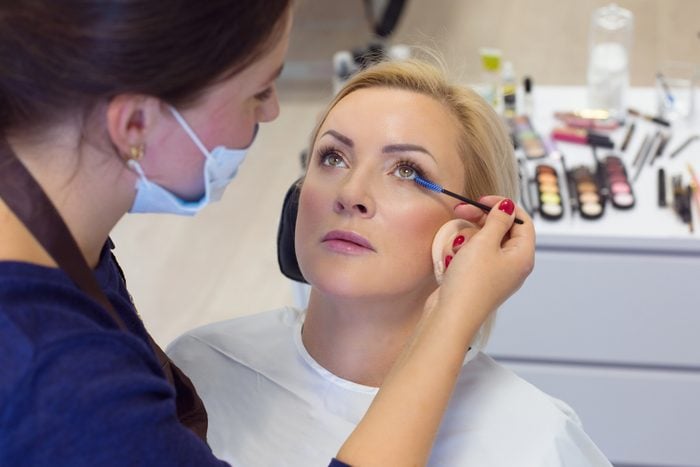
Assuming you don’t need an appointment for a service
This applies to retail stores that offer any type of service, from fittings to personal shopping, but it’s particularly relevant in the beauty industry, where shops like Sephora and Ulta offer makeup application and consultations for free. There are a few issues with not making an appointment. First, this can put the staff in an awkward situation if their schedule is filled up, says Ginger King, president of cosmetic product development at Grace Kingdom Beauty Consulting. After all, they want to accommodate you, but sometimes they just can’t, and you’ll end up leaving disappointed.
And second, even if they’re not involved in an actual consultation, that doesn’t mean they’re free. “When it gets busy, the beauty advisor needs to handle sales, since they have a sales target per hour,” King explains. “Potentially, you will not get the best service either.”
What to do instead: Call ahead to find out the store’s availability, and make an appointment. You’ll save yourself and the employees a whole lot of hassle by not showing up out of the blue and immediately expecting service.

“Cashing in” on free services
Speaking of services at retail stores, these may be advertised as free—like a complimentary beauty consultation or makeup application—but it’s not quite that cut and dry. In fact, plenty of people in the beauty biz agree that a “free makeover” comes with the unspoken expectation that the customer buys at least one product. After all, most employees go out of their way to find the best foundations or best lipsticks for your skin tone, so it’s not out of line for them to expect something in return.
“A good makeover takes at least 40 minutes,” King explains. “There is an unspoken expectation that the beauty advisor wants you to purchase [something], as they have goals to meet.”
What to do instead: Whether the employee is working on a commission or not, purchasing at least one of the products used during the makeover goes a long way in helping them meet their sales quota. And since you’re getting a service completely for free, it’s the polite thing to do.
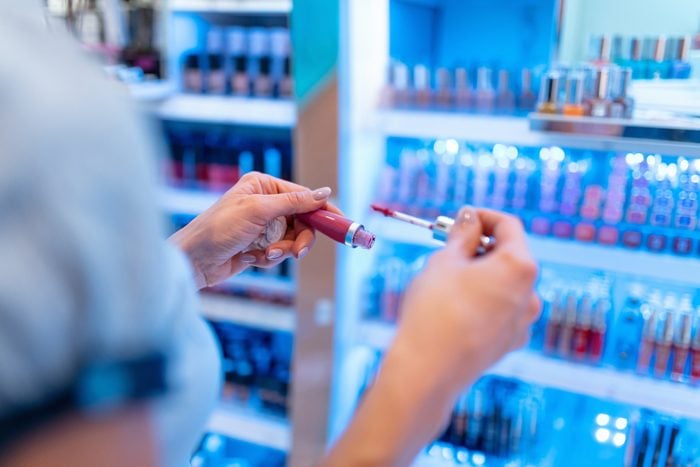
Taking beauty samples into your own hands
Yes, those samples are there for you to test out … but they’re not there just for you. “At the beauty counter, [people] dip their fingers in jars of products,” says King. “This is OK if you own the product, but for the public? No one wants to share whatever germs you may carry.” This is a lesson we all should have learned during COVID times—though COVID isn’t the only thing you should be thinking about here. You can also spread pink eye, E. coli and bacteria that can cause any number of skin infections beyond just a simple breakout. (But let’s be honest, who wants to deal with breakouts from this anyway?)
What to do instead: Always use makeup applicators at beauty displays, and dispose of them immediately afterward. Don’t see one? Ask! “Always ask for a spatula or Q-tip before you try out any creams in a jar,” King says. Whatever you do, don’t put your fingers in those jars, where germs will fester. FYI, this is a smart idea when you take the product home too—and one reason you should be paying attention to skin-care and makeup expiration dates.

Taking photos of something you don’t intend to buy
Maybe you’ll come back for it later (when it’s on sale) or use the pic for some DIY inspiration if you’re crafty. Or maybe you’ll see if you can get it somewhere else for less. We’ve all done it, but retail employees really dislike this practice. “It can be dispiriting to a team member who has spent a significant amount of time offering advice only for the client to take pictures [of a product name] on their phone and leave without buying anything,” explains Tiffany Mielnik Parrish, owner of Selenite Beauty in Charlotte, North Carolina.
While this sometimes happens at the beauty counter, it’s an even more frequent issue at clothing stores. “People [sometimes] just want that glam look on Instagram,” says King, and they have no intention of actually taking those products home.
What to do instead: Keep your cellphone in your bag, and engage with a store employee only if you’re genuinely interested. You can even say, “I’m interested in this, but it’s not in my budget right now.” In fact, the latter can help you. “We understand that everyone’s budget is different,” says Mielnik Parrish, “and communicating with the team member assisting you allows them to tailor [things for you]—not only for your needs but also for your budget.”
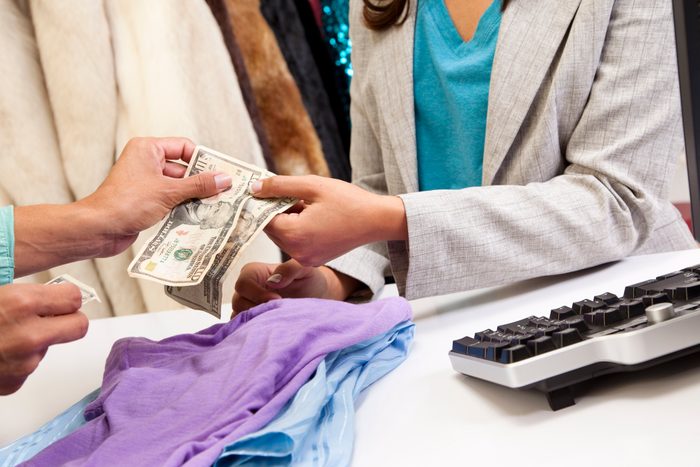
Paying with cash
Does anyone actually use anymore? Well, sure, and sometimes it can help you stay on a budget. But when you’re thrusting a bunch of crumpled-up bills and coins at a cashier, it’s … not ideal. It takes longer for the employee to sort out and count, and there’s room for error, which can put an employee in a tricky spot with both their employer and the customer. Plus, using cash and coins isn’t particularly hygienic, says Maryanne Parker, founder of Manor of Manners.
What to do instead: Present your money to the cashier in the neatest and most organized way possible. Even better, use contactless electronic payments like Apple Pay. FYI, it also happens to be in your best interest to use credit cards instead of cash for certain items.
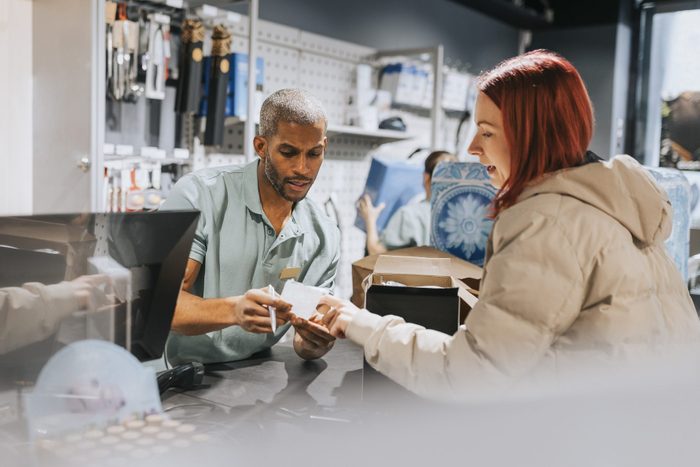
Returning used products
When it comes to clothes, home decor and many other things, returns are, of course, understandable. But returning used beauty products because you don’t like them isn’t ideal (unless you’re returning at Target or Walmart, both of which accept pretty much everything), since the item can’t be restocked once it’s been opened and/or used. At smaller retail stores, these refunds can affect sales and revenue in an even bigger way. In the worst-case scenario, it could reflect poorly on the employee who sold it in the first place—and affect their commission.
“This is very bad practice, but it is commonly seen in beauty retail,” King says. “People will claim they had a reaction and demand a refund. Sometimes the products are halfway done! Sure, the brands should back up their products, but some people abuse the system.”
What to do instead: “If you know you have sensitive skin, ask for a sample to try before you buy rather than buy and return,” King says. “In beauty retail, there are people who are identified as constant returners and sometimes even require a manager’s intervention.”
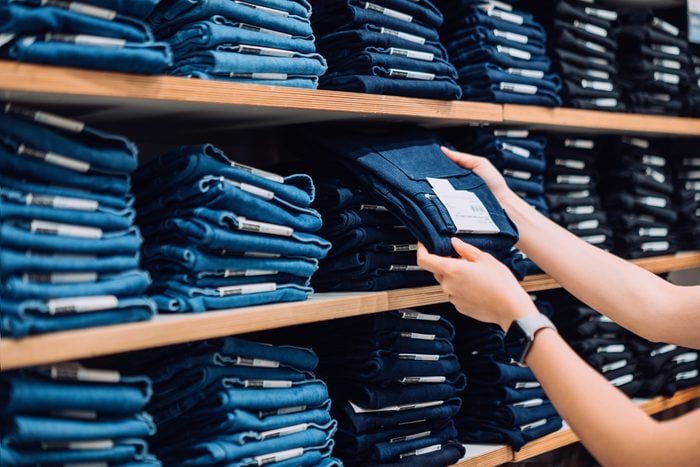
Putting back clothes that aren’t folded
Those piles of folded clothing are so perfect, it’s almost a shame to touch them—but you need to find your size, the color you want and maybe even the right style. There’s definitely some sifting you’ll need to do, and no, you haven’t been trained to fold everything perfectly like the pros who work there. But you could at least try to put it all back properly.
“It’s totally fine and even expected for shoppers to sift through the sizes in a pile of clothes,” says Eldridge. “But when it’s left looking like it’s been rifled through, that’s frustrating for us.”
What to do instead: Make the rifled-through pile as neat as possible, and let an employee at a boutique know you’ve disrupted the pile so they can fix it. Or just hand an item you don’t want directly to an employee. After all, they’ll likely have to refold it anyway.
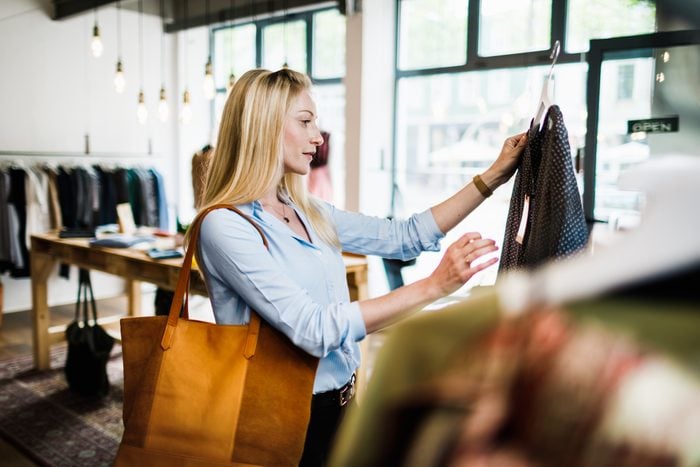
Placing an item on a shelf because you don’t want it anymore
Did you change your mind? Maybe you don’t want that shirt, makeup palette or hat anymore. Whatever the issue, it’s fine to change your mind and put something back before getting to the register. But if you place it on a random shelf and think you’re being helpful, think again. This is one of the “polite” habits grocery-store employees also dislike.
“It’s important that products are returned to the right part of the store,” Heflich says. “Definitely don’t leave it lying around in a way that looks messy, but don’t just pop it on a random shelf before heading to the counter either. It makes employees’ lives easier if we don’t have to run around the store putting things back where they belong.”
What to do instead: Either bring it back to where you found it and return it to its proper place, or bring it to the register with you. At the counter, kindly tell the cashier that you won’t be taking that item, after all. This gives clerks the opportunity to put it away in the proper place the next time they’re doing runbacks.

Asking an employee to check the back
We’ve all been there: You’re perusing the aisles and finally find something you love, only to realize they’re out of your size or preferred color. Or maybe you saw it on the store’s website, which says there’s still one product there … somewhere. You ask a store employee about it, and they tell you it’s out of stock. Undeterred, you want to make sure, so you ask them to “check the back.”
“Ah, the dreaded, ‘can you check the back?’ question,” Heflich says. “I get it—sometimes shoppers are desperate for a specific product, size or color and want to make sure they’ve exhausted all resources before giving up. It can kind of feel like a wild goose chase to us, but we still have to do it as a courtesy.”
What to do instead: If an employee tells you that an item is out of stock, believe them. If you can’t find the right size or if an item is damaged, it’s OK to ask, but “out of stock” usually does mean “out of stock.” Depending on the store, you can ask them to order the item for you, or you can look for it yourself online later.
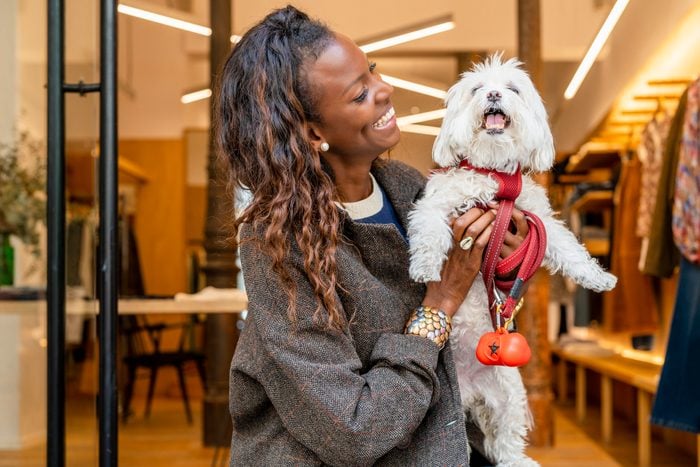
Bringing your pet
Pets are usually never allowed in supermarkets, but most retail stores don’t want your pets to join you on your shopping expedition either. They can track in things like dirt or even ticks and fleas, have an accident, startle other customers and disrupt shoppers with allergies. Plus, even if your pet is generally well behaved, there’s always the risk that they might bite someone.
“Don’t bring your pets into stores unless they are service animals,” Steer says. “Even if your pet is a service animal, keep its leash on at all times so other customers aren’t startled.”
What to do instead: Unless you know for certain that a store is pro-pet or is a literal pet store, leave Fido at home. Here are more rude habits dog owners need to stop.
Sources:
- Scott Eldridge, former gift shop employee
- Michael Heflich, former Pep Boys employee
- Andy LaPointe, owner of Traverse Bay Farms in Michigan
- Mac Steer, owner and director of Simify
- Ginger King, president of cosmetic product development at Grace Kingdom Beauty Consulting
- Tiffany Mielnik Parrish, owner of Selenite Beauty in Charlotte, North Carolina
- Maryanne Parker, founder of Manor of Manners
